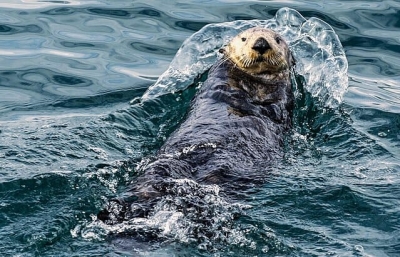
Keystone species can be viewed as “the glue that holds a habitat together”. When their populations suffer so do their ecosystems. But when they recover from the brink, they have a positive cascading effect on their surroundings.
All species have a role to play in this planet, and so they are all important for any ecosystem. But among these are species that have an incredibly huge impact on their habitats and other creatures inhabiting the region. Such species are called keystone species. Their role is so crucial that they actually enable other species to survive. In short, keystone species can be viewed as “the glue that holds a habitat together”. When their populations suffer so do their ecosystems. While there are innumerable stories on how losing wildlife affects a habitat, here are three instances in the U.S.- that show us how keystone species returning from the brink have a positive cascading effect on their surroundings.
Wolves
Following the European colonisation of North America in the early 17 Century, the number of grey wolves fell dramatically due to extermination – from a few lakh to less than a thousand in the mid-20th Century. In the latter part of the 20th Century, the U.S. government swung into action by passing new Acts and also reintroducing the species in its former ranges. And, the results are showing. While studies are still on to gauge the holistic impact, scientists discovered that the arrival of the wolves kept the population of their prey – elk – in check. This prevented over-browsing of vegetation, providing “material for birds to build nests and beavers to build dams. The recovered vegetation helped stop soil erosion into rivers, changing their course by reducing meandering. While building their dams, the beavers also create deep ponds that juvenile fish and frogs need to survive. When they embark on hunts, wolves focus on weak and diseased prey, ensuring survival of the fittest. The grey wolf population is believed to be over 6,000 in the U.S. today. But, legalised hunting is still a threat in a few States.
Bison
The population of the American buffalo or bison had plummeted from millions to hundreds in the 19th Century. In 2014, they were introduced in a region in the State of Illinois, where their numbers stand at about a 100 today. These animals favour “eating grass over flowering plants and legumes, which in turn allows a variety of birds, insects and amphibians to flourish. Some of these species without that grazing simply just disappear off the landscape due to the high competition of the grasses”. Also, when they forage, “bisons hooves kick up and aerate the soil, further aiding in plant growth as well as seed dispersion”.
Sea otters
Due to hunting, sea otter numbers declined tragically on the U.S. West Coast in the 17th and 18th Centuries. But in a few places they managed to survive and grow in numbers. “As the dominant predator of marine nearshore environments”, the impact of sea otters shows in such places. In the Aleutian Islands, “otters maintained the balance of kelp forest by keeping a check on the sea urchins that graze on them”. In California estuaries, “the sea otters controlled the population of crabs, which meant there were more sea slugs who were able to graze algae, keeping the eelgrass healthy”. “Eelgrass is considered a “nursery of the sea” for juvenile fish, and it also reduces erosion, which can factor in coastal floods’.
Picture Credit : google




